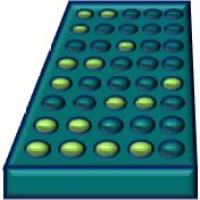Kinetic Measurements for Enzyme Immobilization
互联网
780
Enzyme kinetics is the study of the chemical reactions that are catalyzed by enzymes, with a focus on their reaction rates. The study of an enzyme’s kinetics considers the various stages of activity, reveals the catalytic mechanism of the enzyme, correlates its value to assay conditions, and describes how a drug or a poison might inhibit the enzyme. Victor Henri initially reported that enzyme reactions were initiated by a bond between the enzyme and the substrate. By 1910, Michaelis and Menten had advanced this work by studying the kinetics of the enzyme saccharase, which catalyzes the hydrolysis of sucrose into glucose and fructose. They published their analysis, and ever since, the Michaelis–Menten equation has been used as the standard to describe the kinetics of many enzymes. Unfortunately, soluble enzymes must generally be immobilized to be reused for long times in industrial reactors. In addition, other critical enzyme properties have to be improved like stability, activity, inhibition by reaction products, selectivity toward nonnatural substrates. Immobilization is by far the chosen process to achieve these goals.
Although the Michaelis–Menten approach has been regularly adopted for the analysis of immobilized enzyme activity, its applicability to the immobilized state is limited by the barriers the immobilization matrix places upon the measurement of compounds that are used to model enzyme kinetics. That being said, the estimated value of the Michaelis–Menten coefficients (e.g., V max , K M ) can be used to evaluate effects of immobilization on enzyme activity in the immobilized state when applied in a controlled manner. In this review, enzyme activity and kinetics are discussed in the context of the immobilized state, and a few novel protocols are presented that address some of the unique constraints imposed by the immobilization barrier.








